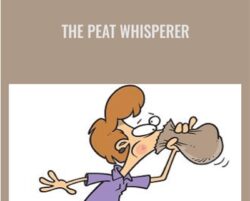Matt Stone and I have a lot in common: we both hate that sleepy-eyed bozo from Coldplay, we both had a crush on Lisa ‘Left Eye’ Lopes from TLC, and we both agree that not since Wiene’s ?The Cabinet of Dr. Caligari? has there been a film as important as Bay’s ?Transformers II: Revenge of The Fallen.In addition to the above, we were both convinced early on that the metabolic rate (as defined by body temperature and pulse) was a compelling factor in health. Well, Matt was convinced before I was, and Dude probably saved my life by introducing me to the potato, but I digress.I credit Matt for turning me onto the relationship between the metabolic rate, the thyroid gland, and the stress hormones. In short, he found that:A high metabolic rate is associated with youthArguably, the?dominant characteristic of youth is the ability to regenerateA low metabolic rate is associated with agingArguably, the?dominant characteristic of aging is imperfect repairAn efficient?metabolism (youth) is supported by active thyroid hormone (triiodothyronine, or T3)An inefficient?metabolism (aging) is supported by adaptive stress hormones (e.g.,?cortisol, adrenaline, etc.)A targeted diet and lifestyle can restore the metabolic efficiency of our youthMatt’s ideas resonated with me due to my experiences with my own health; however, they are not popular amongst our peers in the Paleo community.Rather than discussing ways to support the metabolic rate, those that view health from an ?evolutionary? lens are finding new exciting ways to slow the life process.For example:Have you ever filled your bathtub with ice to engage in ?cold thermogenesis?”Have you ever ?felt great? on a 24-hour ?intermittent? fast”Have you ever?added a stick of grass-fed butter to a cup of coffee”Have you ever called fructose ?f#%ktose?”Have you ever?nodded your head in agreement with anything Robert Lustig or Gary Taubes?has ever said”If you answered, ?yes? to any of the above, you may be an unknowing participant in a phenomenon I have dubbed, ?The Race to Torpor!And if you’re befuddled, don’t worry; as Matt once said, ?If you aren’t confused about health and nutrition, then you haven’t studied it long enough or deeply enough.In the following paragraphs I will attempt to make the case that:Stress is often an overlooked factor in nearly every health conditionAdequate context for dealing with stress was described before the 1950sStress is characterized?by inefficient cellular energy with an increase in unfavorable adaptive?changes (e.g., cortisol, adrenaline, lactic acid, etc.)While protective?in the short-term these adaptive changes are degenerative and inflammatory in the long-termEfficient?cellular energy limits the need for these adaptive changesThe consumption of oxygen is usually the ?bottleneck? in efficient energy productionAmong its many?functions, carbon dioxide allows the cells, tissues, and organs to absorb?oxygenThyroid hormone is the largest factor in the production of carbon dioxide and is the basic?anti-stress hormoneI’ll end the article with a series of questions that are pertinent for anyone with unresolved issues adhering to a ?Paleo template.Let’s get into it.Stress: The Most Misunderstood Concept In PaleoWhile the Paleo community agrees that stress is central in sickness and aging, little attention has been given to the role of the metabolic rate. Luckily, pioneering Hungarian physiologist Hans Selye painstakingly detailed the stress response several decades ago.Selye’s view of stress was formed by lectures he attended in 1925 as a medical student. As part of his curriculum, Selye was shown several patients in the earliest stages of various infectious diseases. The professor carefully pointed out that the patient looked and felt ill, had a coated tongue, digestive issues, aches and pains, was depressed, and had psoriasis.However, the professor ignored the patients’ symptoms explaining that they were “non-specific” and hence “of no use” when attempting to find a suitable drug for killing the germs “responsible” for making the patient ill.The professor’s course of identifying specific maladies to be treated by specific drugs was lost on Selye. Rather than accepting the closed-minded view towards the patient’s “non-specific” symptoms, Selye asked himself why a wide variety of disease states (measles, scarlet fever, influenza) shared the same “non-specific” symptoms of a number of toxic drugs, allergens, and non-infectious diseases.Later on in his career, Selye found that exposing animals to stressors (e.g., environmental toxins, adrenaline, insulin, extreme cold, extreme heat, x-rays, trauma, intense light or sound, hemorrhage, or inflicting pain or forced muscular exercise) induced a variety of unfavorable adaptive changes.If the stress were not so great to be incompatible with life, animals would go through three distinct stages: the alarm stage (shock), the stage of resistance, the stage of exhaustion, and finally death. Selye and his team dubbed this phenomenon general adaptation syndrome (GAS), which has also been referred to as “the stress syndrome” or “the syndrome of being sick.”While Selye wasn’t able to find a stressor that didn’t elicit GAS, the animal’s ability to cope with the stress varied. Selye believed that each animal had a finite amount of ?adaptation energy? that could be used throughout the animal’s lifetime or used very quickly, similar to an inherited fortune.Context Was So Several Decades AgoSome hear the word ?energy? and immediately tune out, but Selye was talking about real biological energy. Additionally, those who are inclined to dismiss Selye’s work thinking that he was a fringe character should consider the words of Nobel Prize winning physiologist Bernardo A. Houssay:??The endocrine organs contribute to the reactions of the organism when an emergency situation arises. This is the case in the event of adrenaline secretion during hypoglycemia or hypotension, or during rage or terror or fear. The role of the endocrine organs in the general-adaptation-syndrome [GAS] of the organism, when confronted with physical or chemical damaging agents or excessive physiological demands, has been brilliantly demonstrated by Selye. According to his studies these reactions, which in principle are generally favorable, can become damaging due to excess or frequent repetition; then they result in pathologic conditions such as nephrosclerosis, arterial hypertension, mycardial lesions, periarteritis, etc. ? Bernardo A. HoussayIn addition to Selye’s work on the biological events of stress, the work of Albert-Szent-Gy?rgyi, Otto Warburg, Broda Barnes, and Raymond Peat alluded to nutrition, hormones, and the environment as having the most profound effect on an?organism’s ability to withstand stress:Nobel Prize?winner Albert Szent-Gy?ryi?described that there was a large difference between producing energy through glycolysis (no oxygen: glucose to lactic acid) and producing?energy through our highly evolved oxidative machinery (oxygen: glucose to?carbon dioxide).Nobel Prize?winner Otto Warburg found that even in the presence of oxygen, a ?respiratory defect? inhibited the?cell’s use of oxygen producing lactic acid instead of carbon dioxide,?which he found to be a characteristic of all cancers.Broda Barnes found that those with?low thyroid (low energy production) were privy to anxiety, heart disease, digestive?issues, depression, chronic fatigue, insomnia, low sexual desire, acne,?poor cognition, and premature aging.Raymond Peat in many ways has?continued the work of Szent-Gy?rgyi and Selye. At 76 years old Peat?continues to describe the interlocking features of cell excitation/relaxation, lactic acid/carbon dioxide, water retention/water loss, salt regulation,?pH and energy levels, along with the biochemical and physiological?processes that reinforce or modify them, including hormones and other?biological signaling substances, nutritional adequacy and the type of fuel?used.T3: The Basic Anti-Stress Hormone (and anti-good movie)As described by Selye, supporting the resilience of an organism during stress requires additional energy. The rate-limiting factor in energy production is usually oxygen, so supporting the cell’s ability to consume oxygen seems like a reasonable starting place. While it might sound far fetched, there are several known factors that influence energy production.Buteyko, whom Matt has mentioned here and there over the years, found that inadequate carbon dioxide could cause anxiety, panic attacks, insomnia, and a variety of other stress related conditions. His idea of ?permissive hypercapnea? has been discussed in journals describing the role of carbon dioxide in oxygen utilization.Buteyko’s breathing exercises, which basically involve breathing less, invoked the work of Danish physiologist Christian Bohr. Bohr found that carbon dioxide helps separate oxygen from hemoglobin in the blood allowing cells, tissues, and organs to better absorb oxygen. Naturally, he called this phenomenon the ?Bohr effect.Thyroid hormone is the most important factor in the production of carbon dioxide. Sometimes called, ‘the hormone of respiration,? T3 supports the cell’s high-energy relaxed state. Sufficient thyroid hormone assures the complete breakdown of glucose (providing carbon dioxide instead of lactic acid) as well as the production of protective sex hormones.In the 1930s diagnostics such as basal oxygen consumption, carbon dioxide production, Achilles tendon reflex, bowel function, serum cholesterol, pulse rate, carotenemia, and quality of hair and skin were used to accurately assess thyroid function.Body temperature and pulse (rate of blood circulation) were two particularly useful tests, as they could be measured easily and did not require a laboratory. A high body temperature (warm hands, feet, nose, genitals, or ~98 ? F) and high pulse (~85 BPM or so) coincided with adequate thyroid function.A Paleo Template: The Best Way To Combat Adaptation?So, before I ask these questions, I would like to state that I’m not interested in getting everyone to eat like me; in fact, I want you to eat whatever you want.However, having gone through the wringer myself, I empathize with those who are stuck in a dietary paradigm that is not getting them to where they want to be.If you’re following a ?Paleo template? and are still experiencing problems, I believe that ruminating on these questions is pertinent:Are pulse rate and body temperature meaningful health diagnostics?What makes more sense: slowing the metabolic rate, increasing it, or is it a “U-shaped” curve?Does the way you produce energy have any significance in health?Carbon dioxide appears to be a central feature in resisting stress and maintaining health. Why is no one in the Paleosphere (besides Chris Masterjohn) talking about it?Get The Peat Whisperer – Danny Roddy, Only Price $27Tag: The Peat Whisperer – Danny Roddy Review. The Peat Whisperer – Danny Roddy download. The Peat Whisperer – Danny Roddy discount. peat whisperer download. the peat whisperer pdf. peat whisperer whiskey
 Webinars That Convert – Amy Porterfield
₹13,280.00
Webinars That Convert – Amy Porterfield
₹13,280.00
 Product Creation Alchemy: My $118,237 Launch Blueprint – Eric Weiss
₹12,118.00
Product Creation Alchemy: My $118,237 Launch Blueprint – Eric Weiss
₹12,118.00
The Peat Whisperer – Danny Roddy
₹3,818.00





